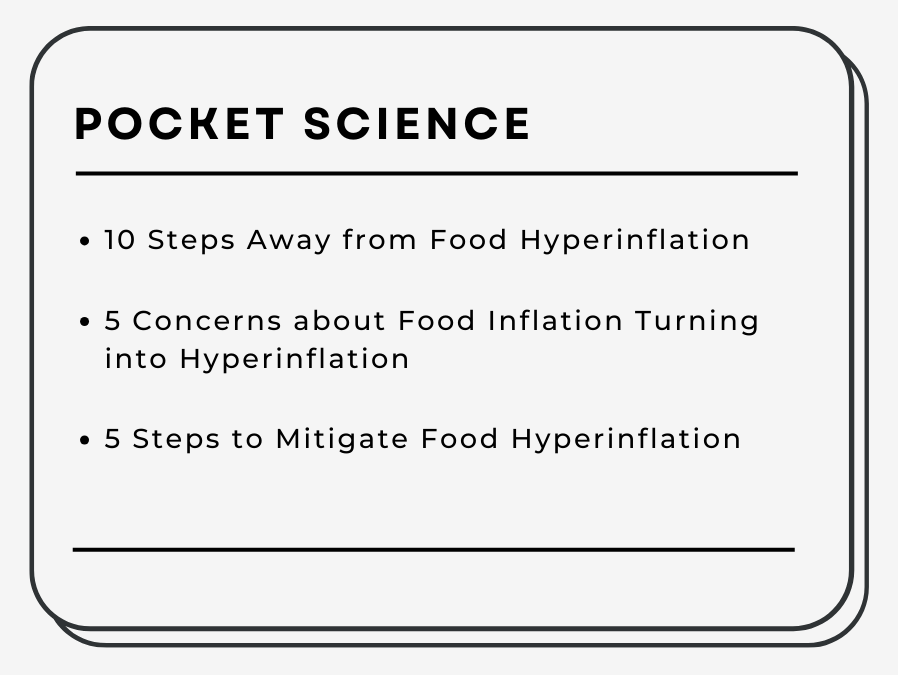10 Steps Away from Food Hyperinflation
As of March 2024, Nigeria's food inflation rate has hit 40%, bringing it alarmingly close to the 50% threshold of hyperinflation.
This alarming trend marks a significant milestone in the country's economic landscape in the last five years, with the rate steadily climbing from 13.51% in January 2019 to its current level.
Hyperinflation refers to an economy's rapid, excessive, and uncontrolled rise in general prices. It describes an inflation rate that is usually greater than 50% per month (inflation measures the rate at which prices for goods and services are rising).
The National Bureau of Statistics (NBS) data reveals a gradual but steady increase in Nigeria’s food inflation from January 2019 to March 2024.
Starting at 13.51% in January 2019, the rate has more than tripled over five years, reaching the 40% mark in March 2024.
If we follow the pattern of previous 10 percentage point shifts, this 10% point gap away from hyperinflation could be closed in a matter of months, except circumstances change.
It took 7 months, from September 2023 to March 2024, for food inflation to reach this milestone, rising from 30% to 40%.
The prior increase in the inflation rate from 20% to 30% took 14 months, from June 2022 to August 2023.
The impact of this skyrocketing inflation extends nationwide, but certain states bear the brunt more than others.
States like Kogi, Kwara, and Akwa Ibom are experiencing exceptionally high food inflation rates, surpassing the national average.
Similarly, Southern states such as Rivers, Abia, and Ebonyi are grappling with significant inflationary pressures, reflecting challenges in market dynamics, transportation costs, and agricultural production constraints.
Urban centres like Lagos and Abuja are not spared either, with food inflation rates exceeding 40%.
Meanwhile, some northern states like Nassawara, Borno, and Bauchi exhibit lower food inflation rates compared to the national average.
However, northern states like Kano and Katsina face inflationary pressures above 36%, influenced by factors such as infrastructure deficiencies and security concerns.
5 Concerns about Food Inflation Turning into Hyperinflation
As Nigeria progresses towards food hyperinflation, here are five things Nigerians anticipate, according to Investopedia:
Exponential Rise in Food Prices: Basic food necessities become increasingly unaffordable, putting immense strain on household budgets.
Erosion of Purchasing Power: People find their salaries and savings inadequate to meet basic needs, forcing them to allocate a larger portion of their income to food expenses.
Hoarding and Shortages: Panic buying and hoarding worsen supply chain disruptions, leading to shortages and further increasing prices.
Nutritional Deterioration and Health Risks: Food insecurity results in inadequate dietary intake, posing risks of malnutrition and health issues, especially for vulnerable groups.
Impact on Agribusiness: Persistent price increases can impact food affordability, leading to lower demand for food products. A decrease in demand could, in turn, reduce investment in the agricultural sector, resulting in layoffs, closures, and higher levels of unemployment.
5 Steps to Mitigate Food Hyperinflation
Nigerians can take these proactive steps to lessen the effects of food hyperinflation and protect the welfare of their homes when faced with these issues.
Budgeting and Prioritizing Expenses: Creating a detailed budget focused on essentials like food, housing, and healthcare helps allocate limited resources effectively. Trimming non-essential expenses frees up funds for critical and basic needs.
Smart Shopping and Meal Planning: Adopting strategic shopping habits, such as buying in bulk, helps to stay within budget. Planning meals around affordable ingredients and cooking in bulk minimises food waste and saves money.
Exploring Alternative Food Sources: Turning to local markets, community gardens, and food cooperatives provides access to affordable and nutritious options. Growing fruits, vegetables, and herbs at home or participating in food-sharing initiatives supplements household food supplies.
Preserving and Storing Food: Learning basic food preservation techniques extends the shelf life of perishable items and reduces food waste.
Community Support and Collaboration: Building strong social networks within the community provides mutual support during economic hardship.
This edition of Pocket Science was written by Khadijat Kareem and edited by Oluseyi Olufemi.
Thanks for reading. See you next week.






